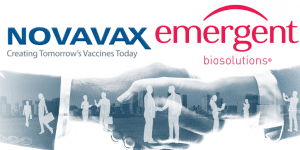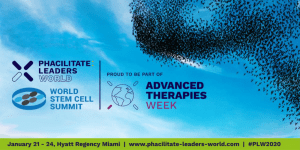
How to Accelerate the Global Cell and Gene Therapy Boom Through Standards and Safety
PDA’s Josh Eaton, Assistant Director of Scientific Affairs, shares his thoughts on the Current State of Advanced Therapy Medicinal Products (ATMPs)
The Parenteral Drug Association (PDA), is on a mission to provide science, technology, and regulatory information to the world. Headquartered in Bethesda, MD they are at the heart of the BioHealth Capital Region and close neighbors to the Food and Drug Administration (FDA) and National Institutes of Health(NIH) among a multitude of biotech companies within the burgeoning gene and cell therapy cluster.
Since its founding in 1946, the non-profit has supported the pharmaceutical and biopharmaceutical community by creating awareness and understanding of the important issues surrounding the rapidly evolving industry. As the gene and cell therapy market continues to boom, PDA remains committed to patient safety and high-quality pharmaceutical production by promoting information exchange and relevant training to the industry.
PDA’s Assistant Director of Scientific Affairs, Josh Eaton, MS, is especially excited for the future of Advanced Therapy Medicinal Products (ATMPs) like gene and cell therapies.
“I have the privilege and opportunity to interact every day with the innovators and champions of the next generation of therapeutic applications. Even beyond the volunteers I work with, there are dozens of companies recruiting scientific and therapeutic visionaries to fully harness the potential for life-changing and lifesaving treatments.”
Eaton’s remark is hardly an exaggeration. Last year, Norvartis ($NVS; Basel, CH) made headlines when their ATMP Zolgensma, on license from REGENXBIO ($RGNX; Rockville, MD), effectively cured spinal muscular atrophy 1 (SMA1) in children. The trial was so successful that patients in the control group were switched to the treatment midway through for ethical reasons.
“There are already amazing applications from a handful of therapies, [like Novartis’] Kymriah, but this is just the beginning. The potential is there to alleviate or obviate a vast array of diseases–afflictions that would have consigned an individual to a lifetime of adversity or what would essentially have been a death sentence.”
Is it too soon to standardize ATMPs?
Maryland’s growing ATMP industry is accelerating the bench-to-bedside process. Under President and CEO Helen Sabzevari, Precigen ($PGEN; Germantown, Maryland) was formed in 2017, greenlit for clinical testing in 2018, and awarded orphan drug designation from the Food and Drug Administration (FDA) in January 2020 for PRGN-3006 UltraCAR-T, their 2-day non-viral CAR-T therapy.
With increased speed came the urgency for standards and practices in the manufacture and scale of ATMPs intended for patient use.
“Standards for ATMPs, or any product class, are crucial to institute recognized and agreed upon levels of practice and quality. [They] ensure that the end-product meets safety and efficacy goals [and that] all the players in the field 1) understand their responsibility and obligation to adhere to the stated material quality or practice, 2) can conduct themselves in accordance, and 3) can ultimately satisfy regulatory, industry, and consumer expectations.”
But how do you standardize precision medicine? Although myriad protocols can be used to develop and manufacture ATMPs, they often contain common steps that can be standardized. That’s where PDA comes in.
“PDA is very pleased to be nearing completion of an ANSI standard regarding the cryopreservation of cells for use in cell therapies and regenerative medicine manufacturing. The public review period will be announced soon for this effort and we encourage input from all stakeholders. When completed, this standard will be available for purchase by any member of the pharmaceutical community via the PDA Bookstore or the ANSI website.”
“PDA has also published Technical Report No. 81: Cell-Based Therapy Control Strategy focused on autologous cell therapies. [We are] committed to drafting additional material for all aspects of ATMP manufacture.”
“One major challenge for developing a standardized approach to manufacturing and quality processes for ATMPs is the fact that there are regional differences in regulatory expectations and requirements for these products. However, PDA has the advantage of 75 years of global interaction and perspective on pharmaceutical quality and production. With the backing of our members and strong, communicative relationships with regulators around the world, PDA has been able to consistently provide guidance and resources to assist companies in their efforts to supply patients with crucial medicines.”
“Another challenge is the sheer variety of disease states to which these products can be applied. With such varied targets, cell types, and patient-specific aspects, it can be difficult to align on a standardized practice or metric.”
Eaton believes that the global reach of PDA will take center stage in carving out patient-centric standards for ATMPs. “With the support and expertise of PDA members, best practices and material specifications can be agreed upon at a certain basic level. [This would] provide a platform from which further specific development and product goals can be achieved.”
Balancing innovation and patient safety of ATMPs
Patient safety is of the utmost importance in medicine, but it can be a tricky beast. To ensure end-user safety from a manufacturing standpoint, PDA relies on the potential energy stored in the minds of the masses.
“PDA’s mission is based upon fostering and coordinating relationships among our members from all companies, organizations (including regulatory authorities), and levels and areas of expertise. Our cell therapy control strategy technical report, the upcoming cryopreservation standard, and our conference and workshop offerings are all created through these relationships in order to ensure the most current and reliable information and practices are shared to produce safe and effective treatments for patients around the world.”
“As a special consideration for the importance of ATMPs for the future of our industry, the PDA board of directors has recently sanctioned the formation of an advisory board whose sole focus is this class of products and to manage the overall portfolio of PDA ATMP-related activities. The ATMP Advisory Board is in the process of formation and there will be a broad call for volunteers who wish to participate.”
PDA caters to members bringing ATMPs to market
Whether developing a product, testing it, or assessing real-world evidence, Eaton feels that ATMP companies would gain key insights from PDA affiliation that boost the commercialization experience.
“When our team of experts drafted TR 81, one of their main goals was to make the information applicable and accessible to companies on the cusp of commercialization, and not only to those who already have a mature product. The team recognized there is often an abbreviated, and sometimes non-existent, Phase III clinical study for these breakthrough therapies and the rapid application of GMP [(Good Manufacturing Processes)] requirements can come as a shock to many companies who have never had to address those more rigid process and quality requirements.”
“Beyond concerns about novice ATMP companies and novel therapies, our teams have recently provided input for the revision of EMA [( European Medicines Agency)] Annex 2 as well as FDA guidances on CMC considerations for gene therapies and patient follow-up related to the potential of replication competent retrovirus therapies.”
“I would argue that there is value to be had at all stages of a company’s operations because our members provide input and experience from their own companies, which are conducting activities across the range of the product life cycle. The most important thing would be to take advantage of the network of subject matter experts either via our online communities or face-to-face at our conferences.”
PDA’s response to COVID-19
The COVID-19 outbreak has created logistical roadblocks across sectors. The drug manufacturing industry was not immune.
“PDA is proactively addressing the impact of the novel coronavirus on the pharmaceutical industry as a whole, including the ATMP space. [We are] forming a task force to develop suggested actions on GMP processes and controls related to manufacturing that need to be considered when pandemics [and the like] occur.”
“One of the main areas of focus will be steps that can be taken to ensure the ability to meet current and increased supply demands for pharmaceutical products during pandemic events. This would include temporary suspension of country importation, retesting requirements, postponement of equipment preventative maintenance (due to employee shortages [and the premium of keeping] equipment in operation), rapid qualification, and approval of shifting products to different filling lines to add capacity–[all] to meet to higher product demand.”
“Additionally, the task force will evaluate and comment on any proposed new emergency regulations developed by global regulators to ensure/increase the availability of pharmaceutical products needed to meet the expected surges in demand.”
Learn more about PDA
Supporting a local PDA chapter is a great way to gain exposure to PDA’s information exchange community.
“PDA relies on its chapters to identify emerging topics for consideration and action. The Capital Area Chapter [held] an event in March to highlight American Gene Technologies (AGT; Rockville, MD), a cutting-edge gene therapy company. AGT’s CEO, Jeff Galvin, was able to engage the audience in the evolution of his company and the potential for ATMPs across the industry. This chapter event, along with others around the globe, provide our members with opportunities to learn from and network [with] their local colleagues while supplementing the scope of PDA activities worldwide.”
For those with information to disseminate, “PDA encourages presentations of case studies at our conferences or in the PDA Journal of Science and Technology,” said Eaton. “Both are great ways for individuals to connect, benchmark, and share ideas and questions.”
The upcoming virtual PDA ATMP Conference in June 2020, designated by PDA as “ATMP Month,” will be another place to meditate on innovation, transparency, and patient safety.
“From presenters such as Dr. Peter Marks [the director of the FDA Center for Biologics Evaluation and Research (CBER)] to innovators navigating the same path of many of the attendees, this conference will be an amazing testament to the dedication and desire of these individuals to better the lives of people around the globe.”
Just a month later, PDA will continue the ATMP discussion at their virtual annual meeting, which will bring together broader segments of the industry.




